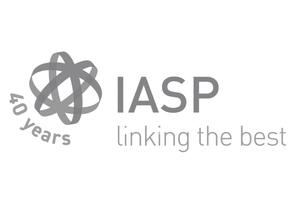05.06.2017
Health Circle: a chatbot for high blood pressure sufferers
Health Circle has developed a chatbot that makes monitoring hypertension more convenient and treatment more effective. The solution generates a structured report that shows the course of treatment and helps doctors make treatment decisions.
Health Circle director Pirko Konsa emphasizes how widespread high blood pressure is as a health problem, pointing out that about a billion people worldwide have the condition – in other words, one of seven people on the planet is hypertensive. “It’s sad that after being diagnosed, so many of them don’t take action to get their blood pressure under control. They ignore it until it gets serious and suffer a heart attack or stroke,” says Konsa.
He notes that hypertension is a lifestyle disease, and that as such, there is a great deal that a person can do to improve the prognosis, including leading a healthy lifestyle and following the treatment regimen determined by the physician. “That’s what we want to do – help those who suffer from hypertension by teaching them how to monitor their condition and give advice based on the monitoring findings,” said Konsa.
Health Circle developed a software solution to do this, letting hypertensive patients gather data on the state of their health. The solution is not a standalone app, but a chatbot integrated with Facebook. “We designed our solution as a Facebook chatbot because we want to be within the environment that people use every day to interact with others. A chatbot can be like a good friend who helps you remember things and instils good habits,” says Konsa. “The alternative is to manually keep a blood pressure diary, but we’re trying to make it easier and more convenient.”
Convenient user reminders
Konsa explains that to use Health Circle’s solution, users can first enter what medicines they have been prescribed and how regularly the doctor recommended to check their blood pressure. Based on those settings, the chatbot issues reminders. For example, when the user logs on to Facebook in the morning, they might see a message from the chatbot such as “Good morning! It’s time to take your medicine.” The robot will also ask for the user’s blood pressure readings and inquire how the person is feeling.
“We also use devices to get information on the user’s movements and sleeping,” says Konsa. “We don’t want to develop complicated and expensive equipment separately – instead, we make a point to use existing ones. Naturally, we could ask what time you went to sleep last night and what time you got up, and manually enter the data, but we think it’s easier to use devices that automatically keep track of those things. The aim is to gather the data by posing so little inconvenience to users that they don’t even notice it.”
Konsa notes that the psychological aspect is also very important for Health Circle – how to create the will and enthusiasm in people to continue their treatment.
“Today’s medicine often tries to use scare tactics to make people change their behaviour – for example, by sticking a picture of a cancer victim on a packet of cigarettes, and so on. People actually become immune to such scare tactics very quickly,” says Konsa. “Actually, we should try to understand whether people want to change or not.”
He says that new habits and changes in behaviour start with user awareness. Konsa says that today doctors prescribe drugs and give recommendations on healthy lifestyles but no one does anything to get people to change their ways. “That’s what we want to do. We believe that if we’re able to make treatment adherence easier for people through a definite action plan, then people will be much more likely to stick to the treatment plan.”
Konsa says it’s all too easy for people to break the promises they’ve made to themselves. That is why the Health Circle chatbot doesn’t only interact with the patient but a family member the patient designates. That family member can then check on how the person is doing and support them if necessary.
Structured information for doctors
The Health Circle solution allows a report to be generated indicating whether the person is getting enough sleep, how much they move physically, whether they’re taking their medicines, and how their blood pressure readings have changed. Structured information like this allows the patient to have an appointment with a doctor. “Then it’s clear whether the problem is that the drug isn’t working or the person themselves isn’t complying with the treatment plan as well as they could,“ says Konsa. “I see that the main benefit for physicians could be that we help them make interactions easier and more streamlined with their patients with chronic conditions. The physician gains by seeing how the patient fares between appointments.”
Konsa says he believes it will make short doctor’s appointments more efficacious. In addition, he notes that the report can be sent to the doctor or nurse in advance, allowing the healthcare staff to decide whether the patient even needs an appointment.
“We want to make the solution even smarter, step by step. Short instructional videos or tips that help patients understand how to find simple solutions in their everyday behaviour to live in a more healthy way,” says Konsa. “In doing this, we have the possibility to make it the chatbot’s job to dispense primary-level instructions, where various aspects can be explained to the patient in an engaging manner.”
Konsa says the first software prototype was ready in autumn 2016, after which it was tested on a very limited audience. Today the project is in the next phase, where testing of the solution has started in cooperation with a clinic and it is hoped to bring the solution to market soon.
“At the moment, we’re focused only on hypertension, but we see opportunities for using a similar solution for other conditions,” says Konsa with regard to the future.

















